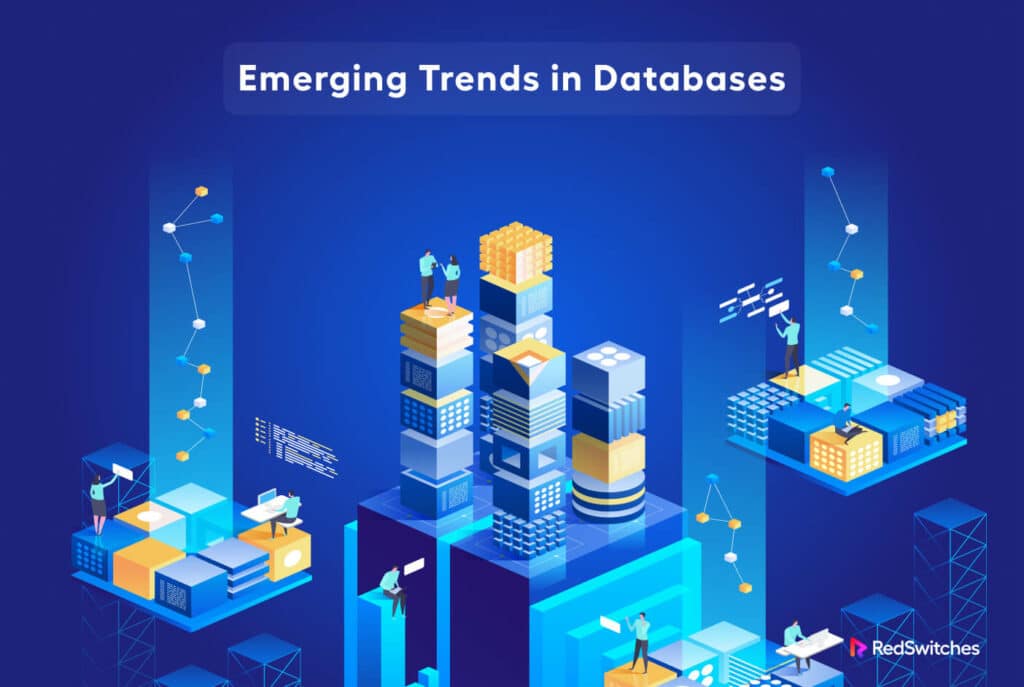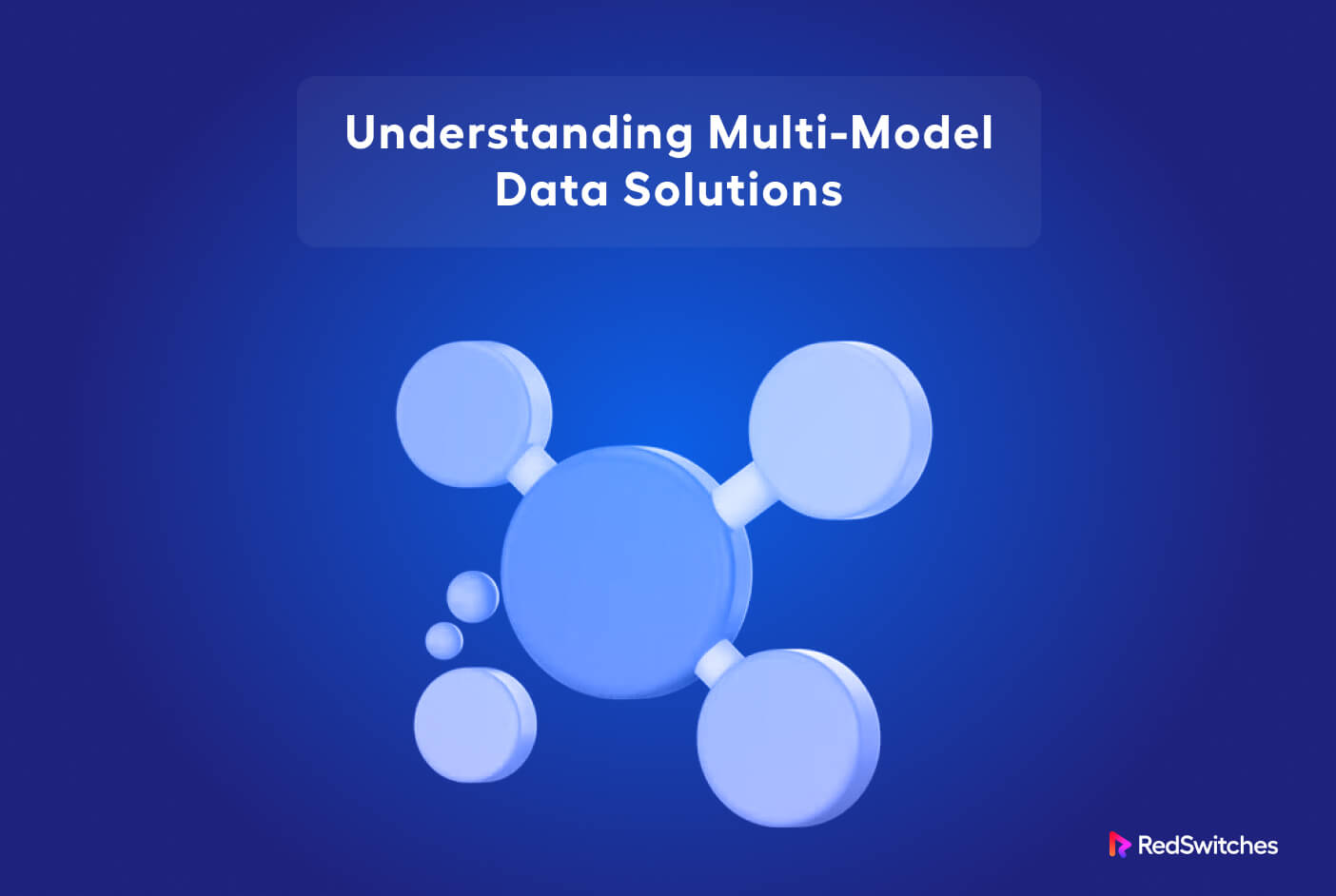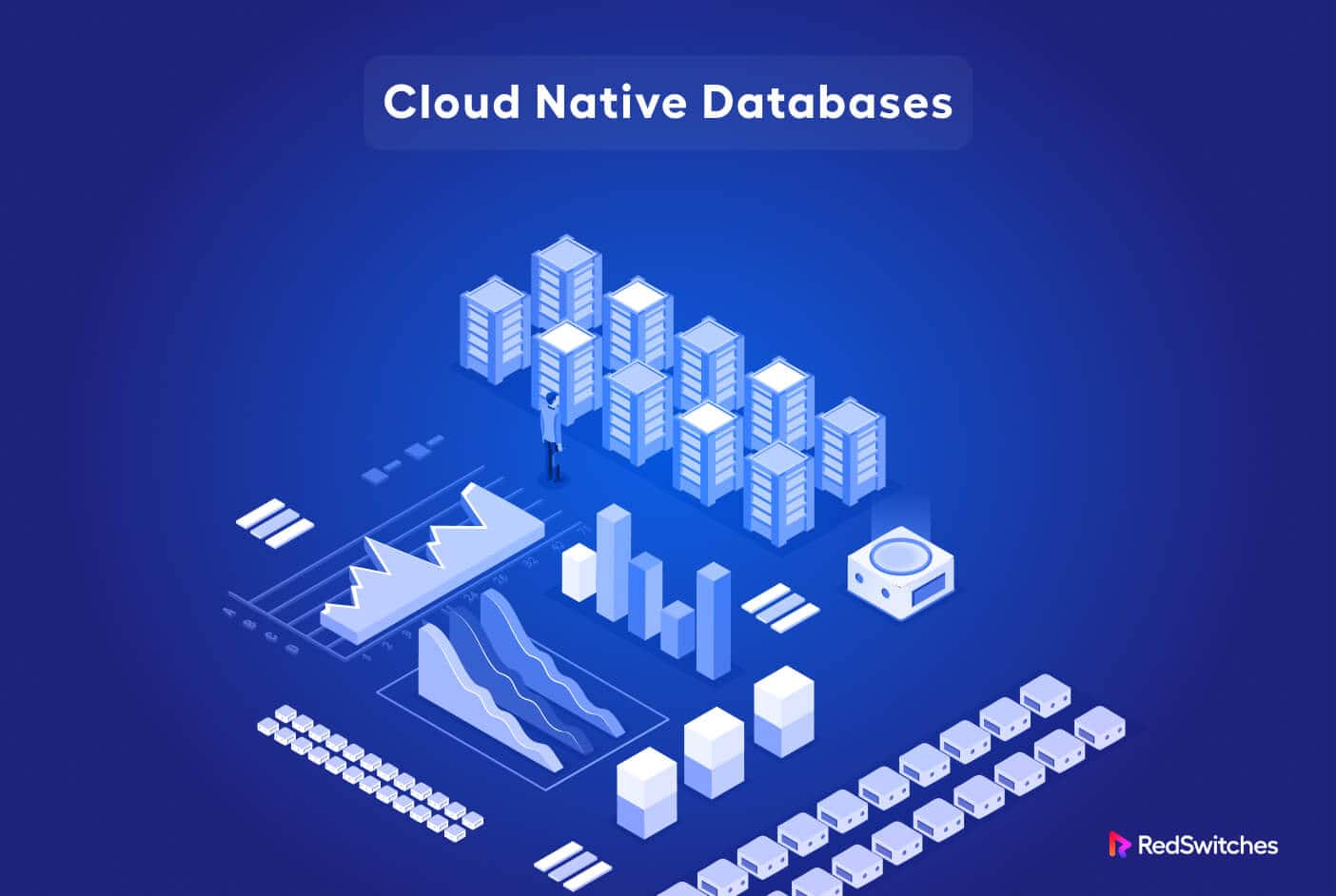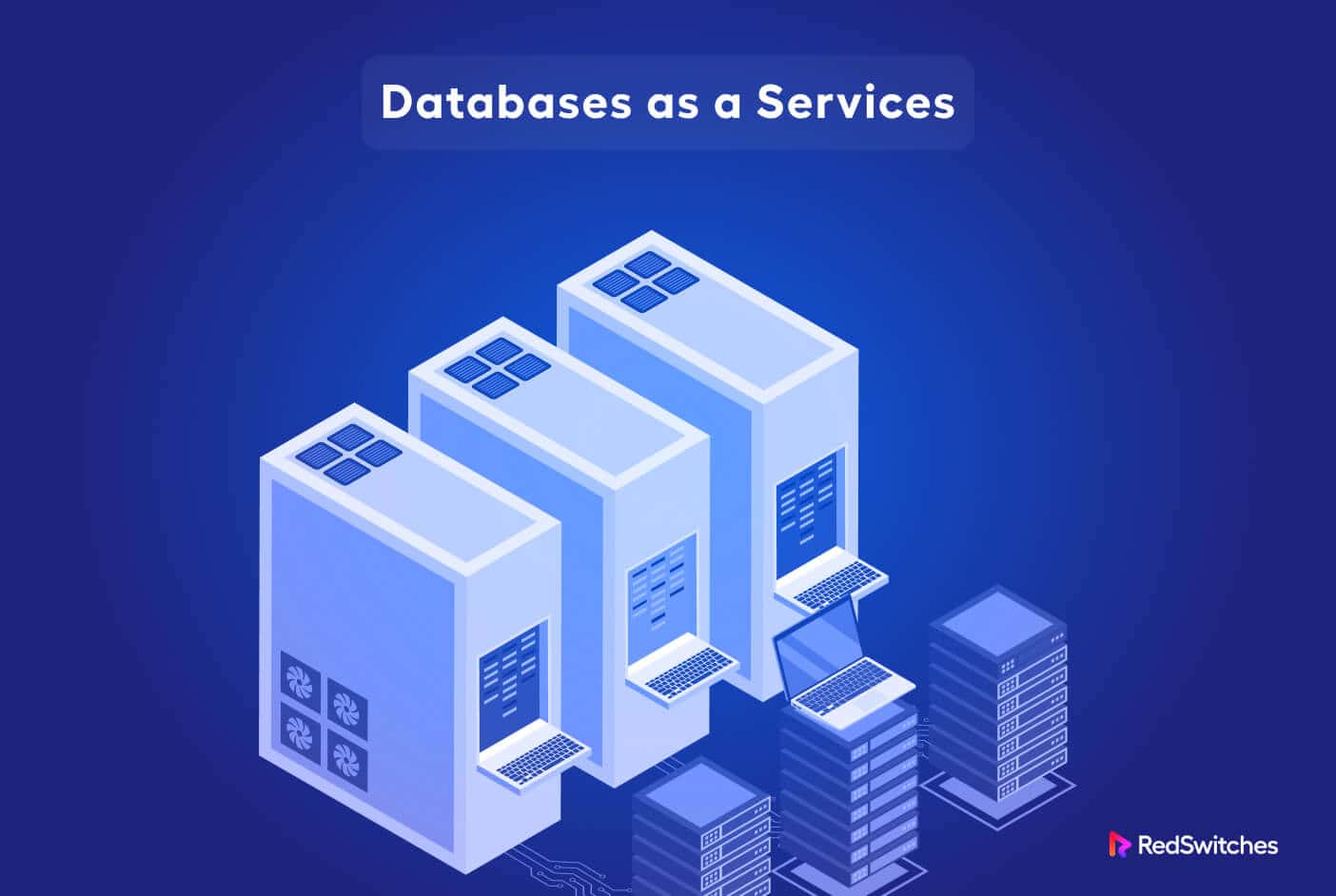In the information age, storing and managing large volumes of data has become a critical aspect of business operations.
The “old” database management systems are no longer good enough to store and manage complex data sets generated by modern applications. Similarly, current and upcoming business applications powered by AI and machine learning will need a new way of looking at databases and how these components interact with the rest of the business architecture.
This article will focus on the emerging trends in databases. We’ll focus on the two essential types of emerging databases (especially a multi model database) and upcoming trends in databases and round up the discussion with a look at how these trends will impact current and future business operations.
Let’s start with the two essential types of database models that are about to take over from the existing database models.
Table Of Contents
- Types of Emerging Databases
- Recent Emerging Trends in Databases
- Recent Emerging Trends in DBMS
- How Emerging Trends in Databases Will Impact Businesses
- Future Outlook of Emerging Trends
- Conclusion
- FAQs
Types of Emerging Databases
The current database models have been around for decades, and most of the existing business operations and applications are based on these database models.
However, businesses now generate a much larger volume of data and thus require a more robust database model that can work with distributed data and multiple data sources.
Here are two emerging database trends you’ll use more frequently in the coming years.
Multi Model Databases
A multi model database is a versatile data processing platform designed to support multiple data models, each defining how the information in the database is organized in the database.
By integrating various models into a single database, IT teams and business users can use multiple applications without implementing a separate database system for each application. These databases can accommodate a range of popular data models, such as relational, hierarchical, object-oriented, document-based, graph, wide-column, and key-value styles. Most of these models fall under the umbrella of NoSQL technology.
This trend combines multiple database models in a single component that businesses can integrate and start using without worrying about the underlying database model. Thus it is called multi model database.
As a result, multi model database options will better align with the specific application needs and data access requirements.
Businesses will be quick to catch on to the multi model database option because of the following benefits:
a. Inter-model Data Consistency
Since a multi model database utilizes a single backend for the supported data models, it ensures better data consistency across all inputs through business applications. This cohesive approach prevents conflicts and discrepancies when dealing with separate databases for each data model.
b. Support for Agile Processes
A multi model database allows storing and managing different data types within a platform. This flexibility provides critical support for an agile environment, making it easier for developers and users to adapt to changing data requirements without the constraints of fixed schemas.
c. Fault-tolerant Due to ACID Compliance
ACID (Atomicity, Consistency, Isolation, Durability) compliance ensures that database transactions are reliable and robust. A multi model database that adheres to ACID principles are much better at maintaining data integrity, even during system failures. Compared to traditional databases, a multi model database is much better at keeping data consistent and reliable.
d. Multiple Data Views Support Project Complexities
A Multi model database is well-suited for complex projects that require multiple perspectives or views of the data. Whether it’s a relational, graph, or document-oriented approach, a multi model database can accommodate diverse data models and provide efficient access to various data representations. This streamlines data analysis and decision-making processes.
Cloud Native Databases
A cloud native database refers to a database system specifically designed to leverage the capabilities of cloud technology and distributed systems to their fullest extent.
The term “cloud native” encompasses services, software, APIs, and databases created and optimized for deployment and operation within cloud environments. These cloud-native systems are built to maximize the advantages offered by cloud computing.
Cloud computing and hosting are mature technologies that will only improve in the coming days. As a result, the cloud native databases will offer the following advantages:
a. Enhanced Scalability
The most crucial aspect of a cloud-native database lies in its ability to scale seamlessly with varying workloads.
These databases offer the capability to expand capacity to accommodate increasing workloads dynamically. This eliminates the worry of storage limitations and related issues, such as application crashes and call failures due to a lack of disk space.
b. Elasticity
Scaling down is as important as the ability to scale up database capacity. A cloud-native database offers the flexibility to reduce its capacity when workloads decrease, ensuring that you only pay for the resources your application consumes during a billing cycle. This is a critical advantage of these databases.
c. Resilience
A cloud-native database demonstrates higher resilience against system failures, safeguarding data integrity. In a system failure, cloud-native databases can automatically migrate data to a new pod and recover without data loss. In most failure scenarios, the users are not aware of the incident because of the multiple fail-safes and fail-overs built within the system.
d. Support for Automation
Cloud-native databases can better leverage automation platforms like Kubernetes to manage database deployment and operations. Since these databases reside in the cloud, businesses have far more options to automate and streamline repetitive mundane processes through automation technologies.
e. Accessibility
In contrast to traditional databases that are limited to their deployment environments, cloud-native databases offer more accessibility to applications and users. As a result, developers can benefit from always-available databases that offer unified data access options for simpler and varied connectivity and data operations.
f. Simplified Database Management
Cloud-native databases streamline the management and updating processes due to their automation and scalability features. Developers and users use these simple processes to manage the data better and speed up access and write-back operations.
Recent Emerging Trends in Databases
Database technologies are undergoing rapid development and changes because of the central role these technologies play in application performance.
Accessing data has become a frequent activity, and given the massive volume of data typically stored in a business’s data stores, retrieval speed, and accuracy have become important considerations.
We’ll now discuss the four most essential trends in database technologies that will soon enhance the role of these components in business operations.
1. Intelligent Database Systems
An intelligent database is a comprehensive full-text database integrated with artificial intelligence (AI) components, which interact with users to deliver relevant information effectively.
The AI aspect prominently contributes to search queries, employing connectionist neural network models to better match the user intent and required data presentation formats. In essence, an intelligent database goes beyond mere data storage and manages information naturally and informally for users.
By leveraging advanced AI capabilities, this system excels at presenting data in a contextually meaningful way, surpassing the limitations of simple record-keeping. It ensures that users receive comprehensive and pertinent information through interactive and intelligent means. Consequently, the scope of an intelligent database extends far beyond conventional data management and generally includes enriching the user experience.
2. Machine Learning to fill in Missing data and Validation
Machine learning integration within databases involves incorporating techniques and algorithms to elevate the capabilities and functionalities of the database systems.
This integration empowers databases to exhibit higher intelligence, adaptability, and proficiency in performing tasks surpassing conventional data storage and retrieval capabilities.
Machine learning also improves data validation and accuracy by learning from the existing data and helps fill in the gaps in the data.
3. Enhanced Real-time Data Processing
Real-time data processing involves the rapid execution of tasks within a minimum time frame. This closely matches the user expectation of near-instantaneous output.
This processing occurs concurrently with the input of data, necessitating a separate stream of input data alongside constant output. Notable real-time data processing systems instances include bank ATMs, traffic control systems, and network-connected systems used in distributed business operations.
Real-time data processing is alternatively referred to as stream processing. It enables swift and responsive data handling, making it a critical component in various time-sensitive applications and industries.
Real-time data processing is alternatively referred to as stream processing. It enables swift and responsive data handling, making it a critical component in various time-sensitive applications and industries.
4. Blockchain Integration Within Databases
Blockchain databases can store transactional data as a default feature. Nevertheless, when specific project requirements demand additional features or enhanced performance, blockchain databases can be leveraged for data storage and retrieval.
The deployment of a blockchain database is contingent upon factors such as data centralization and the operational characteristics of the system. These considerations play a vital role in determining the suitability of blockchain technology for particular use cases that demand blockchain’s security and transactional record-keeping capabilities.
Recent Emerging Trends in DBMS
Let’s move on to another critical area of our discussion of the emerging database trends. Database management systems (DBMS) are essential components that facilitate database operations and help applications and users better manage and optimize data organization and manipulation.
We’ll now discuss two crucial trends in DBMS:
1. Database-as-a-Service (DBaaS)
Applications and users can access and interact with remote databases through a cloud service called Database-as-a-Service (DBaaS) without setting up and maintaining the supporting infrastructure.
DBaaS essentially removes the requirement of physical access to the database. Businesses can use databases like any other remote resource, such as processing capacity.
Like other managed services, the DBaaS vendor patches, upgrades, and backs up the database.
Benefits
DBaaS offers significant advantages by allowing businesses to streamline data management operations while saving time and money.
The following are some of the most widespread advantages that businesses get when they integrate DBaaS into their operations:
- High Availability: DBaaS is a dependable solution that ensures your data is constantly accessible and available, minimizing downtime and maximizing productivity.
- Security: DBaaS offers multiple security processes and controls that protect your data from unauthorized access from internal and external actors.
2. Hybrid and Multi-cloud Database Architectures
In addition to DBaaS, hybrid and multi-cloud database architectures are emerging trends that will soon revolutionize how businesses use databases and DBMSs to access and manipulate data in local and remote data stores.
Let’s discuss these ideas in some detail.
a. Multi-cloud
The idea of multi-cloud is comprehensive and includes several scenarios where IaaS, PaaS, and SaaS cloud computing and various storage services from two or more public cloud vendors are used in varying combinations within the same network architecture.
A multi-cloud strategy minimizes vendor lock-in, improves business continuity, and gives development teams plenty of freedom to create and utilize database interfaces.
Managing a multi-cloud environment is challenging and requires careful orchestration and continuous attention to security and governance issues.
b. Hybrid Cloud
A hybrid cloud combines a privately hosted cloud with at least one public cloud service provider. Businesses create a hybrid business cloud deployment by combining public cloud services with on-premises infrastructure.
This fulfills a variety of use cases, including development and testing, backup and archiving, and managing production workloads to match spikes in demand.
How Emerging Trends in Databases Will Impact Businesses?
Two recent database innovations, multi-model databases, and cloud-native architectures, have significant commercial ramifications across numerous industries.
With the advent of multi-model databases, businesses may now effectively manage many data types within a single system. This increases data handling flexibility and better streamlines internal processes. In addition, this increased adaptability leads to better data access and analysis, enabling businesses to make better data-driven decisions.
Businesses will benefit from previously unheard-of levels of scalability and performance, thanks to the move towards cloud-native databases. These databases can automatically scale resources based on demand by utilizing the power of cloud infrastructure, allowing them to handle expanding datasets and traffic spikes without user intervention.
As a result of this scalability, businesses may increase operational effectiveness, decrease downtime, and improve user experiences while reducing costs because they only pay for the resources they use.
Businesses adopting these new trends can also benefit from the agility and responsiveness cloud-native architectures bring into operations. The flexibility to deploy, administer, and update databases in a cloud-native environment allows businesses to respond more quickly to shifting market dynamics and customer demands.
Additionally, cloud-native databases encourage team cooperation by enabling seamless departmental integration and communication, fostering a more cohesive and adaptable company environment.
Future Outlook of Emerging Trends
Emerging database technologies like multi-model databases and cloud-native architectures have a bright future and are expected to grow significantly in the next few years.
Experts anticipate fast adoption across industries as organizations become better aware of the benefits offered by multi-model databases in managing various data types inside a single system.
Because of these databases’ adaptability and efficient operations, business applications can access and analyze data more quickly, discover insights, and speed up data-driven decision-making.
Cloud-native architectures will also keep growing in popularity because they can auto-scale and seamlessly interface with the rest of the cloud infrastructure. Businesses will use these advantages to adapt to expanding datasets, manage spikes in user requests, and reduce operational expenses, thanks to the pay-as-you-go billing model.
Future developments in database technology will likely solve existing constraints and difficulties, including real-time data processing, management of complicated data linkages, and data security.
Introducing AI and machine learning capabilities into emerging database models will help businesses automate housekeeping and related activities and enable more effective data processing and predictive analytics.
Future trends will concentrate on integrating cutting-edge encryption techniques, better granular access, and strict data protection legislation compliance.
Conclusion
Emerging database developments, especially the growing popularity of multi model databases, present an intriguing new frontier. A multi model database accommodates many data types inside a single system, streamlines processes, enables quicker data access and analysis and simplifies application development. These databases offer scalable, affordable, and flexible data management solutions paired with cloud-native architectures, allowing businesses to succeed in today’s data-driven environment.
We also mentioned other intriguing database developments, such as AI and machine learning for sophisticated database architectures. This integration promises to streamline data processing, automate activities, and extract insightful information from massive datasets.
At Redswitches, we recognize the value of keeping on the cutting edge of technology. Our dedication to offering cutting-edge cloud solutions complements the newest developments in database design, enabling companies to fully capitalize on the advantages of multi-model databases, cloud-native architectures, and intelligent database systems. Redswitches will continue to be committed to providing scalable, secure, and performance-driven database solutions to organizations, enabling them to succeed in this data-centric era.
FAQs
Q-1) Why are cloud-native databases essential for future business success?
Cloud-native databases take full advantage of cloud hosting and management infrastructure advancements. Businesses that adopt this database type will see significant cost reduction and improvement in data operations.
Q-2) What will be the impact of machine learning and AI on databases?
Users will see significant improvements and new ways of query management for data stored in internal and external sources. Many current manual operations will be automated, and businesses will experience a much higher emphasis on automation and data processing capacities of databases.




